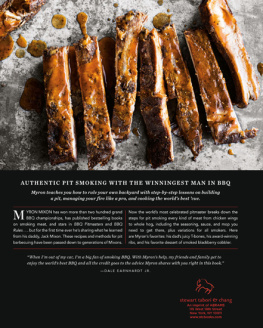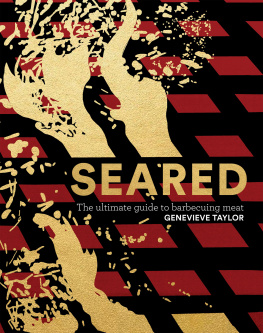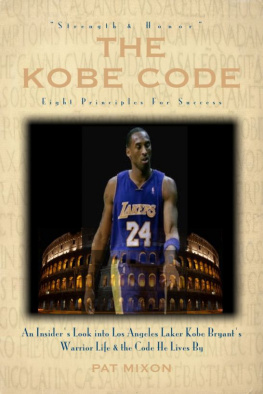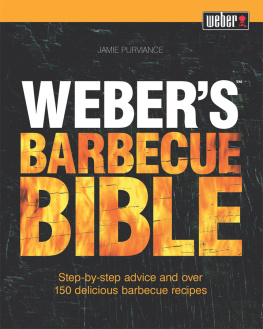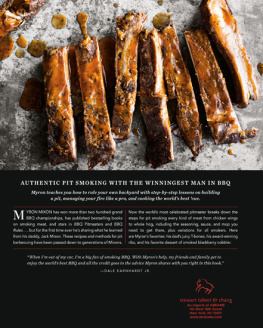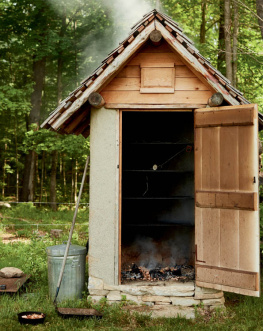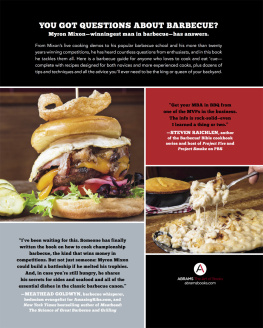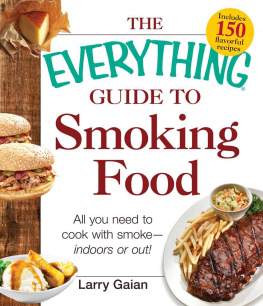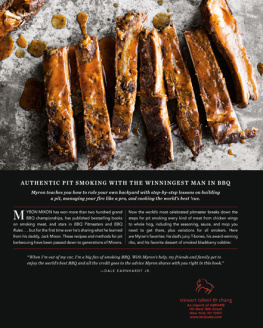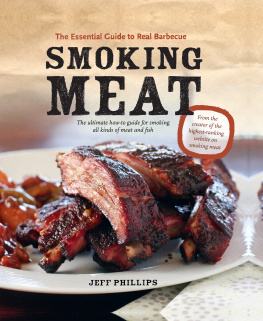
This book is dedicated to
MY DAD, JACK MIXON,
AND TO THE OTHER EARLY PITMASTERS
who helped pave the way for me.

TABLE of CONTENTS
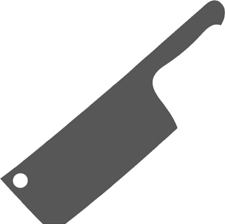





The early American pitmasters were
SURVIVORS
trying to make their way in this new country.
And with pit barbecue they hit a home run right off the bat. The best combination of flavors today is still vinegar, salt, and pepper.

A
HOW TO USE THIS BOOK
THE RULES FOR
BBQ RULES
T his is a book that will talk about fire and meat. It will give you trustworthy formulas for many simple preparations of foods like pork, chicken, and beef. But there are a few things you need to keep in mind before you get started. One: I believe smoking meat on a coal-fired masonry pit makes the best barbecue there is.
Before we even get to the first point, you should understand that this book is not about cooking with a direct flame, otherwise known as cooking meat over an open flame, otherwise known as grilling. In this book Im talking about barbecuing. Both methods involve cooking outside. But the similarities to what Im doing and grilling end there. Grilling is cooking food fast over high heat: 350 to 400F (175 to 205C) and up. Its a technique made for meat thats relatively tender and quick to cook. There are lots of good books that can tell you how to do that, but not this one. I specialize in true barbecuing, otherwise known as smoking and pit smoking (both of which involve cooking meat over fire but rely on different types of heat, which Ill get to in a moment), which not only cooks the meat at 350F (175C) or lower, but also infuses and tenderizes the meat with smoke and other natural flavors that can only come from cooking food by means of either direct or indirect wood-fired heat. You should know that, unlike a traditional smoker, a pit offers direct heat: The heat source is placed directly beneath the meat with no barrierexcept for the occasional gratebetween the coals and the meat. (Traditional smoking, however, is cooking food slowly over a low temperature that is fueled by the heat emitting from smoking wood chips in a vessel we call a smoker; there is technically no fire in the smoking process because youre burning embers. When you cook in a masonry pit, theres a fire to stoke.) This book is going to show you how to do that at a level that will make your neighbors weep with admiration and envy, like mine do.
A
RULE 1:
TRY MAKING YOUR OWN COALS
for tips and advice on modern smokers.)



RULE 2:
WHEN THE PIT IS HOT, COOK A BUNCH OF THINGS
Once you commit to a session of coal-fired pit cooking, you should cook as many things as possible so you make the most out of your time and the heat in the pit. It takes about three hours to get a pit up and running to where youve burned your wood into coals and youve used those coals to heat the pit: Now its ready for cooking. I say once youve spent three hours getting your pit going, why not take advantage by cooking a bunch of stuff in it? Are you making a brisket? Might as well smoke some cheese in there too, throw in a pork shoulder, or toss a belly on the coals so you can make barbecue sandwiches. The inside of a pit is larger than the inside of a commercial oven and probably larger than the inside of your backyard smoker or grill, even if youre working with professional equipment.
A NOTE ABOUT PIT CAPACITY:
ONE: You have room to cook multiple things at the same time, so do it if you can.
TWO: You can scale the amounts in the recipes Im giving you to suit your needs. Dont need a 20-pound (9-kg), 5-bone prime rib this time? Get a 10-pound (4.5-kg), 3-bone one instead, and adjust the cooking time. (Dont change the technique, just alter the cooking time. My rule of thumb is that you need to cook the meat to the same internal temperature I describe in the larger-sized recipes, just reduce the cooking time by 30 minutes per pound of meat.)
RULE 3:
KEEP THE HEAT CONSISTENT
Dont open your pit or your smoker if you dont have to. Every time you open it, you lower the temperature inside by about 5F (3C) for every minute its open. Itll take several additional minutes of cooking time to make up for that loss of heat. When youre cooking barbecue its very important to maintain a consistent temperature inside the pit.
RULE 4:
LET THE MEAT REST
When you take it out of the pit, let the meat rest, loosely covered in a pan or on a cutting board. It has to rest after you cook it so that the flavors you worked so hard to infuse concentrate, the texture solidifies, and the temperature regulates throughout the piece of meat. Never skip this step, no matter how much of a hurry you may be in to eat.

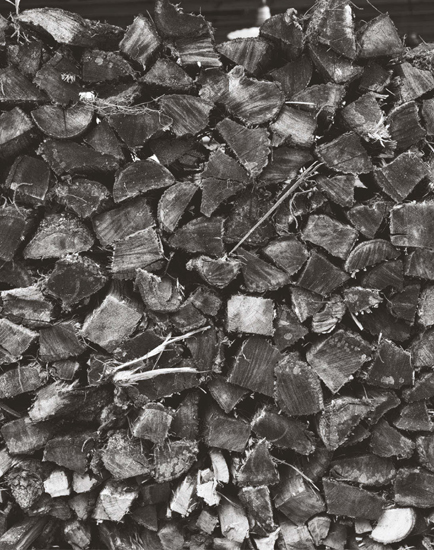
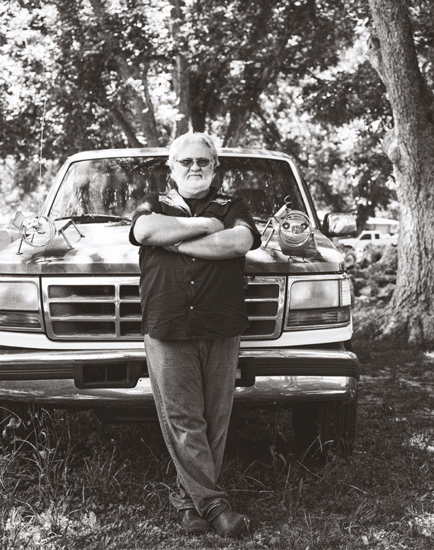
A
INTRODUCTION
THE TRUE STORY OF BARBECUE
I am going to tell you the story of how I got into barbecue, which includes the story of the art form that we today call barbecue plus the story of how I learned to barbecue from my daddy, Jack Mixon. Thats a lot of story, and its going to involve an idea that I think gets overused a lot, one I dont often refer to and sure dont take lightly, and that is old school. Some people in the world of barbecue claim the term old school just because theyre cooking with wood (stick burning, as we call it), but thats not the real deal. In barbecue, old school means cooking on a homemade coal-fried masonry pit, where the first step is burning down wood to make your own coals, then shoveling those coals beneath the meat, and finally cooking that meat over direct heat. Thats old school. And thats the way I learned how to do it and how Ill teach you how to do right here, right now.
Next page
